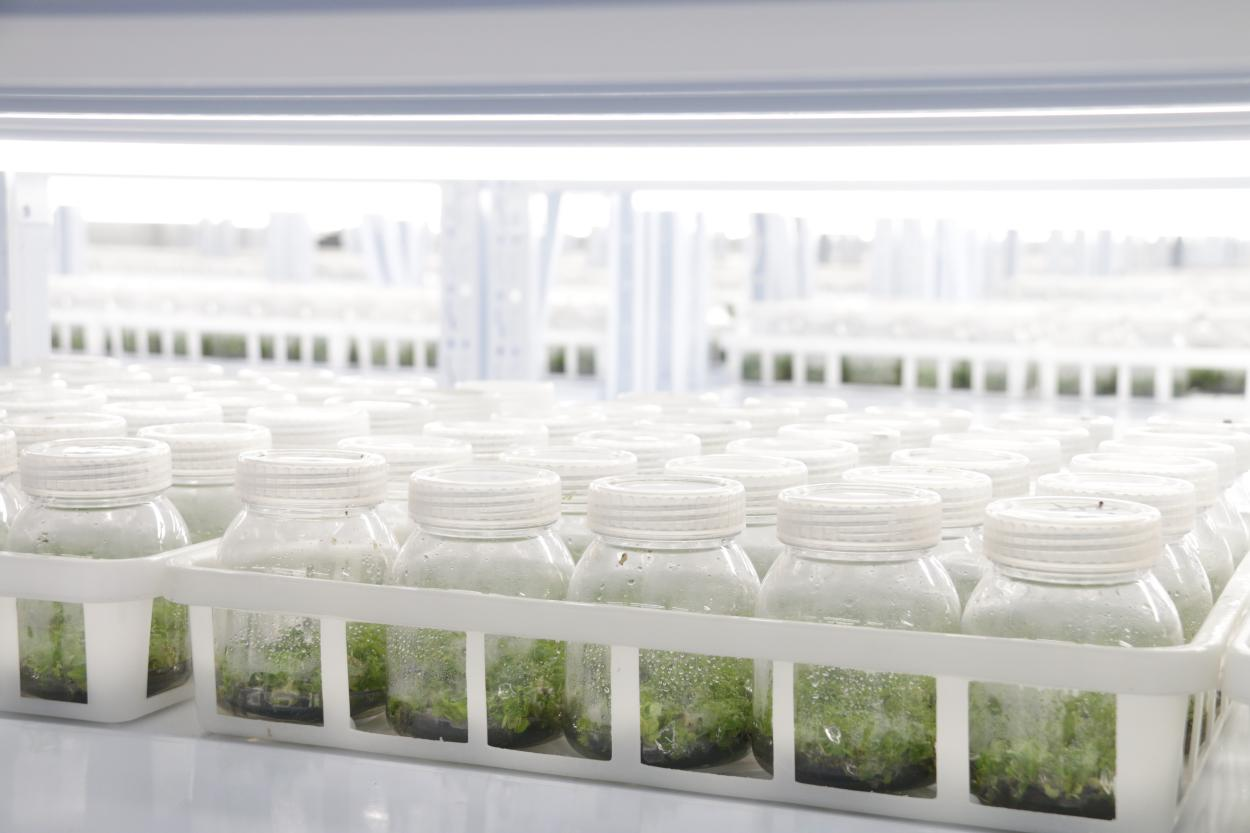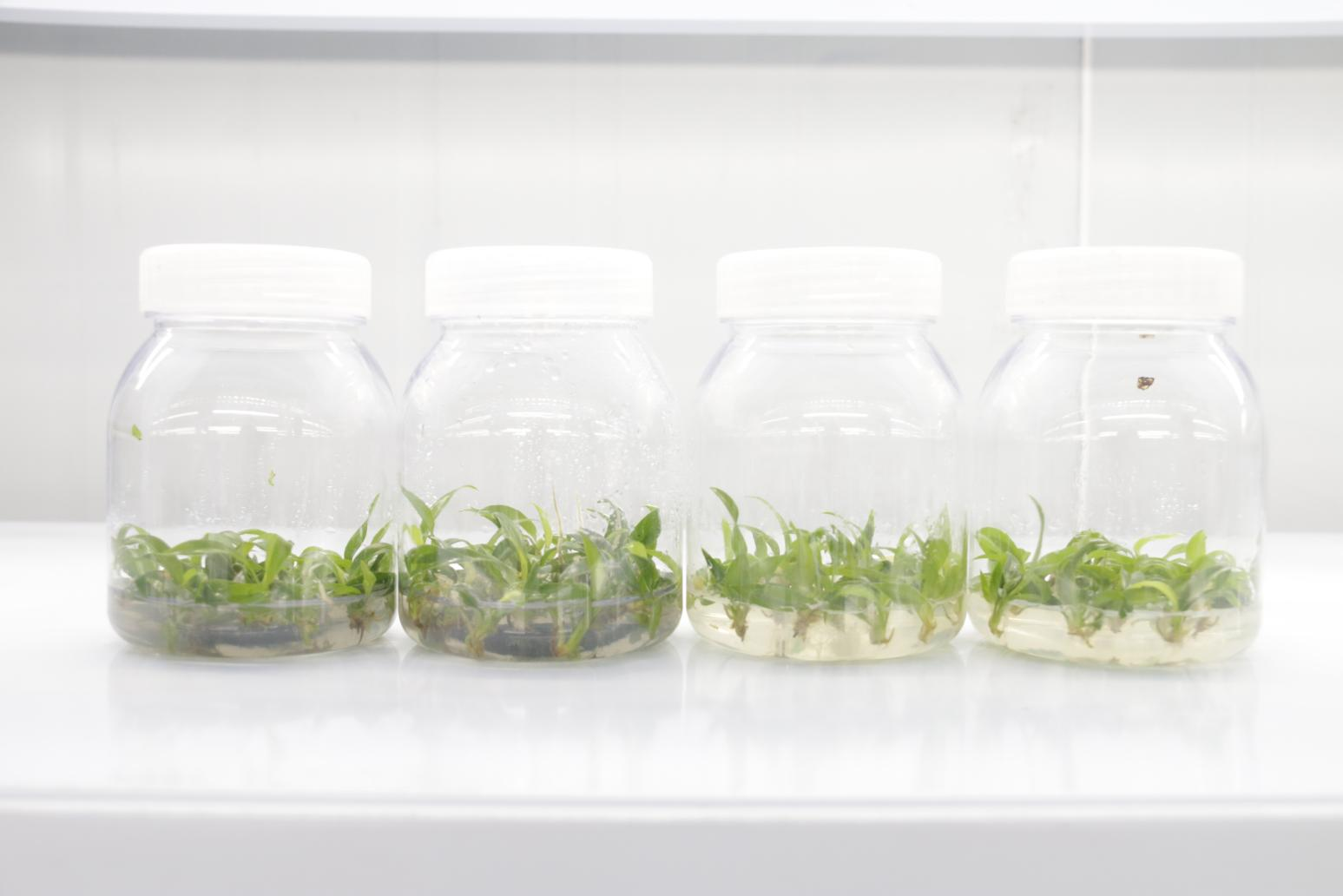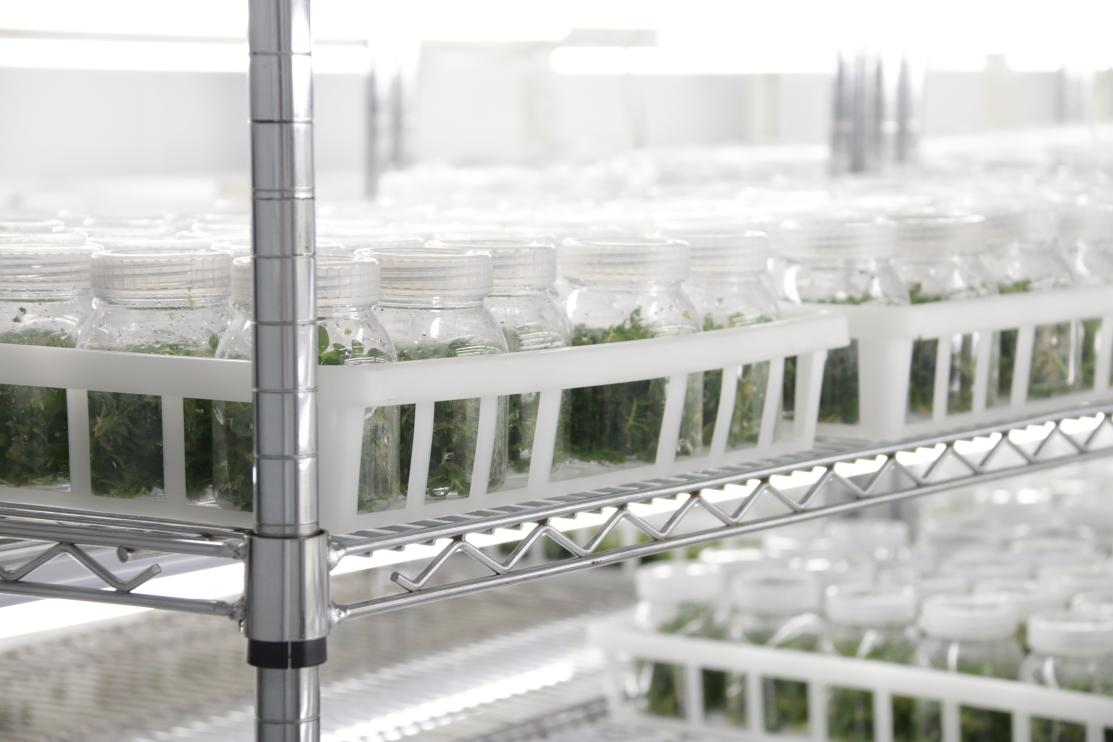How Tissue Culture Plants Are Enhancing the Quality and Consistency of Ornamental Plants
The world of gardening is vivid, and there is no permanence to the concept of perfection. Whether you're a seasoned horticulturist or a weekend warrior, the goal is always the same: beautiful plants that make people happy and satisfy them.
Let’s get an insight into tissue culture plants, a relatively innovative method that is slowly but surely revolutionizing the ornamental plant industry. This is not just about plant propagation; it is about increasing quality to levels that are almost impossible to obtain naturally. So, carry out your gardening without the uncertainties; with tissue culture, what you sow is exactly what emerges.

The Marvel of Tissue Culture
Let's dig deeper into this plant wizardry called tissue culture. Imagine, a tiny part of vegetable tissue being grown on a glass and so transformed into a plant similar in all respects to the original plant. Each of the plants resembles the other in both color, form, and adds a spellbinding aroma similar to the original one. This method of tissue culture plants enhancing quality is not mere science fiction; it's horticultural reality.
Well, as you can see, with this technology, old-fashioned propagation uncertainty is a thing of the past. There will be no more surprises when your much-anticipated red rose blooms in yellow. Tissue culture works like a clock, and time works well in a garden where all orders are set in the musical nexus as perfectly timed.
Consistency: The Gardener's Best Friend
Picture yourself, for example, strolling in the garden under the flowering trees. All the trees in the garden are sculptured, and the size of the leaves, flowers, stems, and branches is equal and symmetrical. This is the potential given by the tissue culture ornamental plants. The frustration of mismatched flower beds is history. Instead, you enjoy a harmonious garden symphony that pleases the eye and soothes the soul. For nurseries and landscapers, this consistency is invaluable. It streamlines planning and guarantees satisfaction for every project, big or small. With tissue culture, you get what you pay for, and every plant is a testament to the beauty of precision.
Flower Power: A Floral Revolution
Ever wondered how those immaculate flower shows and botanical gardens achieve such grandeur? The secret lies in tissue culture for flower production. It ensures that blooms appear beautiful, provide pleasant smells, and last longer on average. It is like having a personal florist who will never let you down. Unlike other aspects of technology that limit plant beauty, lifestyle technology goes a step further to increase plant hardiness.
This eliminates seasonal degradation of tissue-cultured flowers, due to unfavorable conditions, as the flowers will be perfect and this will lead to a better quality.
A New Era in Horticulture
The use of tissue culture plants in horticulture is not just a fleeting trend but a transformative movement. It opens doors to cultivating exotic and rare species that once seemed out of reach. Imagine a garden that boasts the rarest orchids or the most delicate ferns, all thriving due to the magic of tissue culture. Moreover, this method is environmentally friendly, reducing the need for harmful chemicals. It's a win-win for gardeners and the planet.
By minimizing pesticide and fertilizer use, tissue culture aligns with sustainable gardening practices, earning the nod of approval from Mother Nature herself.
Benefits for Ornamental Horticulture
Why should you hop on the tissue culture train? Let's count the ways:
● Uniformity: All plants are similar to each other, which are Twins/ siblings/ clones etc.. This way, garden designing, and maintenance have become less of a hassle. It also makes your garden systematic and orderly, thus making it easier to have the beautiful backyard garden most people would like.
● Disease Resistance: This is due to the fact that tissue culture plants are tendered to diseases since the plants are grown in a sterile medium. This means healthier gardens with plants that can grow, not having to worry all the time that they are getting infections or infestations, and additional leisure time to enjoy your garden.
● Speedy Production: The benefits of tissue culture include making it possible for commercial growers, who require many plants from one seed, to produce those plants swiftly. This procedure expedites plant production due to the optimization to market expectations thereby keeping growers pertinent in their economic practises and ventures without the typical slow down commonly encountered in conventional cloning techniques.
● Species Preservation: One of the major functions of tissue culture is to support the survival of rare plant species thereby increasing plant species' diversity in future generations. In this way, us scientific researches guarantee that it will save Genetics of those species as well as the beautiful varieties of plants which in turn maintain the balance in the ecosystem.
● Customization: Tissue culture makes it easier to standardize on plant characteristics depending on the requirement or taste. With this technique, the plants can be created of different colors, with better or worse scent, or of different growth intensity, offering the possibility of fulfilling specific requirements in terms of beauty, smell or even growth rates.
In essence, tissue culture benefits for ornamental horticulture are immeasurable. From the simplest backyard garden to the grandest public parks, the advantages are as clear as a sunlit morning.

Streamlined Propagation
Say goodbye to seeds and the idea that the unexpected is just part of the process. Propagation of ornamental plants using tissue culture is a breeze. This method works well with virtually any type of plants including the orchids, succulents, etc.
Using the gardening analogy again it is like having a natural and automatic ability to grow healthy plants that are strong.
The Art and Science Behind Tissue Culture
Tissue culture makes use of art and consolidated with science and the beauty of nature with precision of technology. It is a long process where you have to grow plant cells, tissues or organs under very clean environment.
These being the case, reproduction by seed enhances the development of full grown plants as the small plant parts are given the right nutrients or growth hormones.
This method makes it possible to practice and make adjustments to what is found in a gene pool by only passing the best genes to the next generation.
The Environmental Impact
In addition to the problem of aesthetics, tissue culture has numerous benefits for the environment. Conventional methods of propagating large quantities of plants are that they are grown on large-scale farms which pollute the environment and cause loss of habitat.
Tissue culture on the other hand needs a little space and any resources used are relatively inexpensive. This makes it possible to grow plants without having to disrupt their ecosystems for their growth.
Commercial Applications
Tissue culture can be said to be revolutionary in commercial horticulture. This has the benefit of being relatively cheaper affording large scale production of high quality plants.
Multiplication of plants is fast hence time and labor involves in nurseries and green houses for the production of plants. In addition, it enables the production of plants throughout the year so they can be produced in large quantities throughout the year.
This emerging technology is an essential contributor to the cause of improving tissue culture procedures. The buffer laboratories such as Young Plants are supplied with appropriate and advanced equipment to monitor the environmental conditions.
This precision has informed the generation of new plant varieties and increased the effectiveness of the procedure.
With the application of technology, tissue culture not only remains a technology but also provides further aspects of advancement in horticulture.
The Future: Bright and Blossoming
The future of gardening is not only going to be bracing; it is going to be dazzling and the leading force is going to be tissue culture. As we keep on advancing in technology, the options available are quite numerous.
Think of the possibility of being in a garden where plants emit light at night and give a fairylike view at night and can even change colour according to the season. It is not just planting and nurturing trees; it is about taking the science of plant growing to the extreme to palm evolution.
Tissue culture is revolutionizing this field, for that reason, it helps to think bigger and farther. That is a completely different age, where science and fantasy sculpt the life out of dreams.

Conclusion
Exploring the world of tissue culture plants is always very exciting. It is a gardener's dream come true by averting the problem of attaining uniformity and even conserving rare kinds.
Suppose plants in every garden from private to public, from the most secluded yard to the largest park, are healthy and pristine. As we adopt this innovation we also develop our gardens and at the same time we are able to support the conservation of the environment.
Young Plants, a leader in this green revolution, providing top-notch tissue culture plants that transform ordinary gardens into extraordinary landscapes. With Young Plants, your garden is guaranteed the best of nature and technology combined.
Transform your garden dreams into reality with Young Plants’ exceptional tissue culture plants today!













